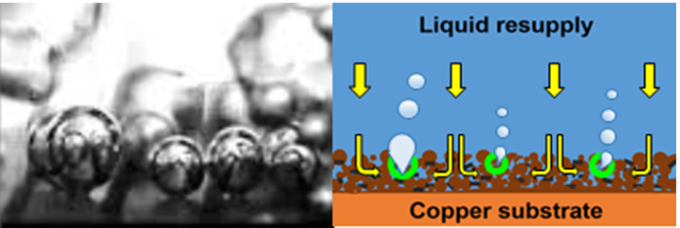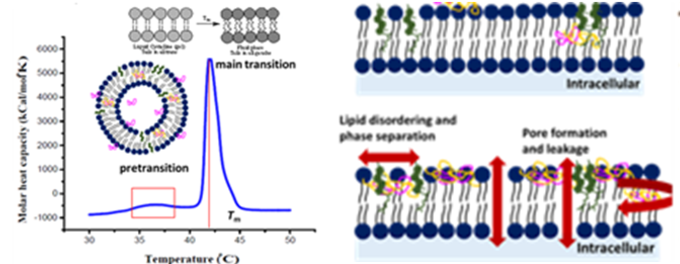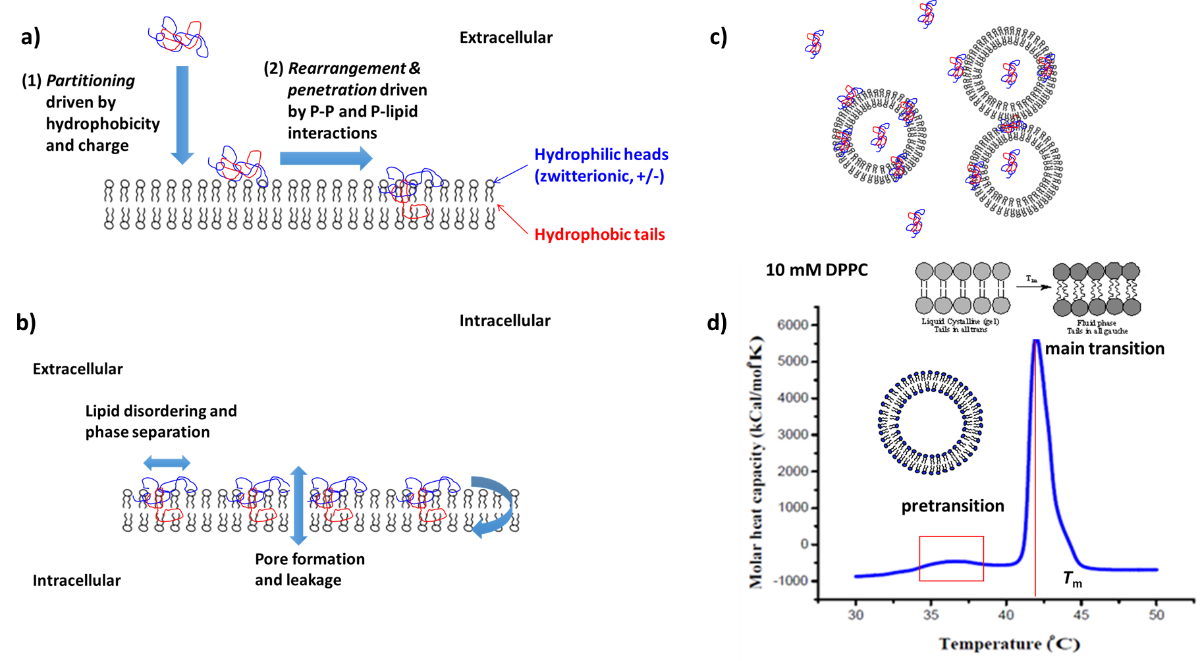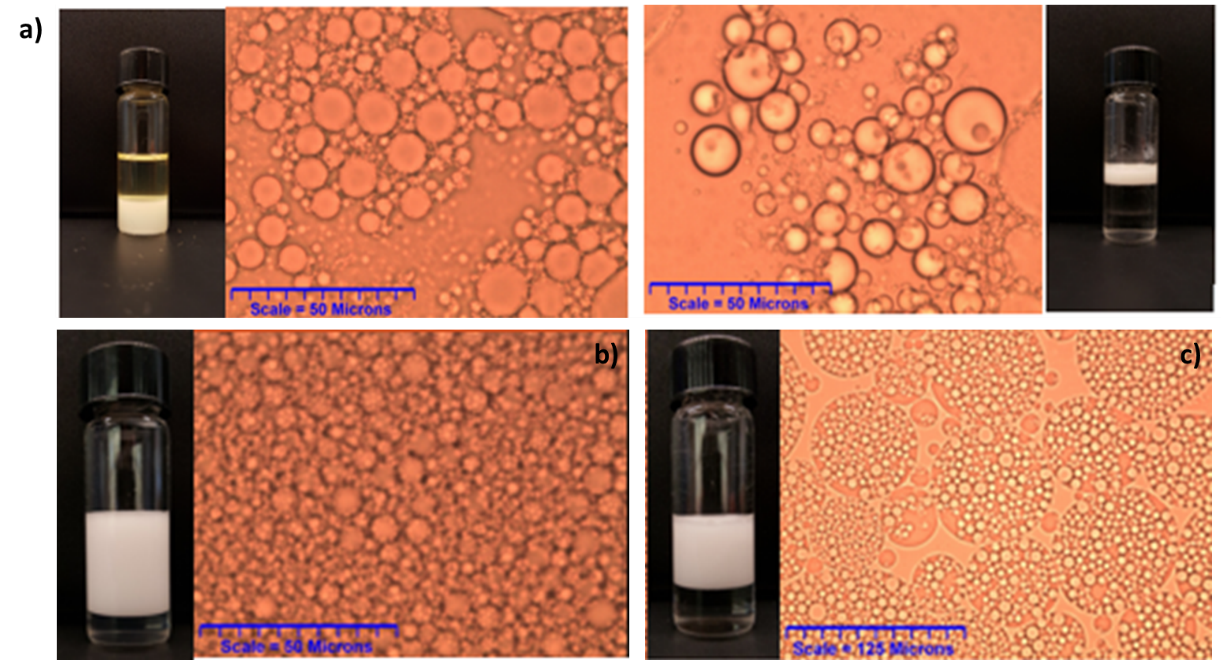Research
Research Related Activities
Towards developing methodologies and techniques to using
- Using Colloidal self-assembly,
- Electrochemical deposition processes,
- Dip and Spin coating methods
And characterize properties and performance of micro- and nano-scaled materials for their applications in
- Medicine,
- The chemical separations industry
- Sensing technologies.
HEAT TRANSFER FROM LIQUID TO VAPOR PHASE

- Increase Heat Transfer Properties at low wall superheat
- Create high temperature, surface-active coatings
- Application: Chemical separations
LIPID MEMBRANE PERMEABILITY FROM GEL TO FLUID PHASE

- Binding and Internalization across the cell membrane
- Create lipid-based carriers and artificial cells
- Applications: Photodynamic Therapy for Cancer
Self-assemblies for drug and vaccine delivery
Cell membranes impact the delivery of therapeutics and functions of the entire cell. The major focus of this project is to exploit the self-assembled lipids (or liposomes) as protein carriers to address the need for needle-free potent vaccines for children’s ear infection, a challenge faced by collaborators at the Rochester Regional General Hospital. Another focus of this collaborative work is to use riboflavin encapsulated liposomes as a potential biocompatible Photodynamic Therapy (PDT) compound for cancer therapy.
The mechanism by which therapeutic molecules enter the cell is not fully understood. Liposomes (self-assembled lipids) are also used as a model cell membrane to study the non-endocytic uptake mechanism. The Figure below demonstrates the phase separation behavior in cell membranes due to the presence of proteins, schematic of protein encapsulated liposomes as potential vaccine candidates and the differential scanning calorimetry thermograph of lipids showing pretransition and melting phases.

Micro and nanoemulsions for environmental clean-up and oil recovery
The stabilization of oil and water emulsions with safe dispersant systems while controlling the droplets is a grand challenge in oil recovery and mitigation processes. The effects of the presence of ethanol, surfactants, and ions in aqueous phases investigated that result in the formation of a variety of emulsions. The Figure below demonstrates a) phase inversion behavior of the emulsions formed from uncharged surfactants, b) nanoemulsions and c) multiple emulsion formations.

Porous coatings for phase change heat transfer applications
Separation processes are the most commonly encountered processes in the chemical industry and account for about 45-55% of industrial energy consumption. This work addresses the need for improving the phase change heat transfer that takes place during the distillation process to separate the petroleum-relevant liquid mixtures that will cut down the energy consumption and reduce the carbon dioxide emissions. The proposed work will focus on creating porous copper and carbon nanomaterials based surfaces to enhance the nucleate boiling characteristics of the liquid mixtures. The Figure below shows graphene-coated copper surfaces with a) ridge-like morphologies, b) roughness and c) water droplet images demonstrating changing wettability due to change in roughness.

Nanoparticle/polymers coatings for Surface-Enhanced Raman scattering (SERS) and Metal Enhanced Fluorescence (MEF) applications
Surface-based spectroscopic sensors can be used to detect a variety of analytes. The general structure of this type of sensor includes a substrate (to provide mechanical stability) and then one or more layers of molecules that are used to transduce the chemical signal to a usable output, typically a spectral shift or intensity modulation. Nearly all of this class of sensors provide good sensitivity but are much poorer in terms of selectivity. One way to solve this problem is to use multiple, orthogonal modalities on the same platform. This can be accomplished by using different layers for the transducing portion of the sensor and exploiting the interfacial characteristics to enhance different spectroscopic regions. In one example, we showed that a silicon substrate coated with nano-sized gold particles could be used to enhance both fluorescence and Raman spectra. As indicated in the Figure below, the spectral responses depended on the thickness of the transducer molecule.



